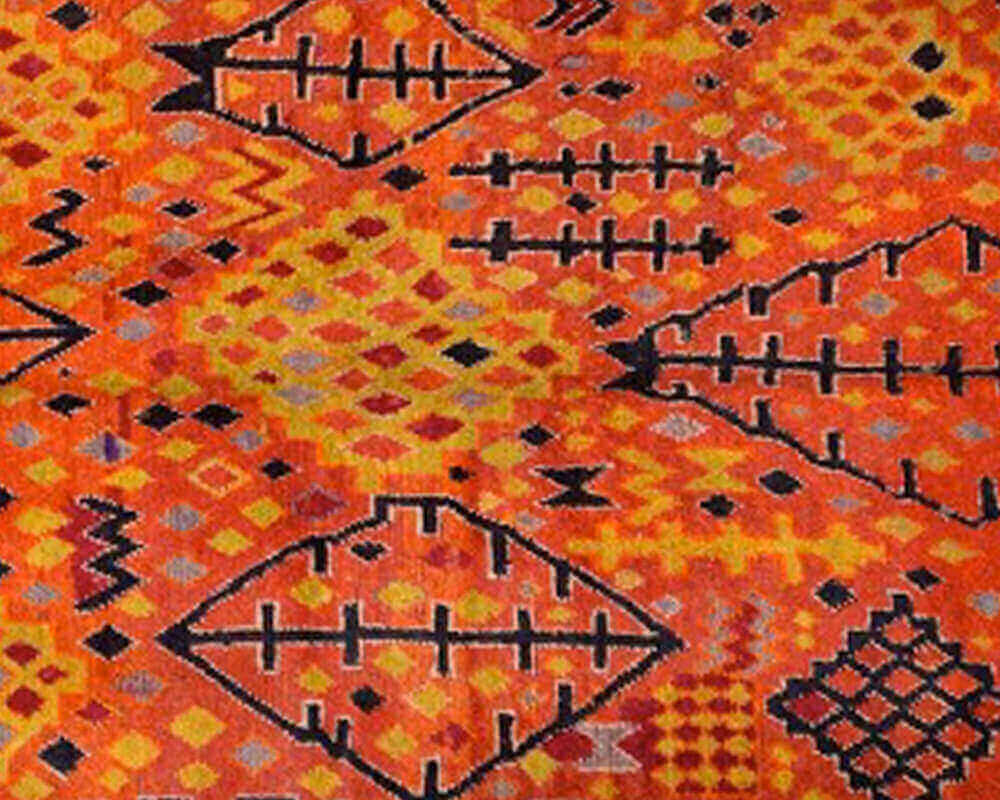Travellers, writers, poets and musicians from around the world have told passionate stories about Morocco - a country with an uncanny ability to captivate all who visit, regardless of their background. Morocco's allure goes beyond its delicious food, vibrant colours and the warm smiles of its people. The true richness of Morocco lies in its intangible qualities, which create a deep-rooted desire to return and relive the experience. There is power in the invisible, in the cultural depth that leaves an unforgettable impression.
The visual splendour of Morocco is woven from a mosaic of cultural influences, each contributing to the unique charm that captivates all who visit. Exploring the historical layers behind this vibrant culture offers a fascinating perspective on modern Morocco - a journey through its arts, crafts and unspoken traditions.
Morocco's geographical location has exposed it to a wealth of external influences. Overlooking both the Mediterranean and the Atlantic, yet rooted in Africa and historically linked to the Silk Road, Morocco has long been a crossroads for different cultures. This blend of influences, reimagined through Moroccan arts and crafts, provides a unique insight into the country's creative soul.
 © Photo by Max Braun via Unsplash
© Photo by Max Braun via Unsplash
Moroccan Culture Through the Lens of Walili (Volubilis)
The archaeological site of Walili, or Volubilis, near Meknes, is a vivid example of Morocco's cultural mix. Although often referred to as a Roman ruin, Walili reflects an intersection of Berber and Roman influences. While Roman-style masonry is evident, typical Roman urban features such as a coliseum, theatre or circus are absent - suggesting that Walili was more a Berber town with Roman touches.
The mosaics in Walili incorporate elements of Berber folk art; the borders are decorated with lines and crosses similar to those found in Berber carpets from the Middle Atlas. In Berber symbolism, tower-shaped lines represent the masculine, while diamond shapes, symbolising fertility, are considered feminine and are often placed within these frames. Walili illustrates not only the Roman influence, but also how the meeting of Berber and Roman cultures is preserved in Moroccan art and crafts. © Photo by Raul Cacho via Unsplash
© Photo by Raul Cacho via Unsplash
The Origins of Moroccan Embroidery
Both the Moroccan caftan and traditional embroidery have become icons of international fashion, but their origins tell a deeper story. Moroccan embroidery and the caftan have their roots in the migrations that have shaped Moroccan culture. After the fall of Visigoth Spain in 1492, artisans of various faiths fled to Morocco, bringing their skills and cultural traditions with them. The craftsmanship they brought with them lives on today in Moroccan embroidery, which crosses borders to grace the world's runways.
As we explore Moroccan handicrafts, we see what makes Morocco so distinctive and universally welcoming. Morocco today is a unique tapestry of cultural influences, and while more and more production processes are becoming mechanised, handicrafts remain a central part of Moroccan life, connecting people and preserving cultural identity.
Berber Carpets: Masterpieces of Tradition
Known for their vibrant colours and intricate textures, Moroccan carpets are a staple in traditional riads and often serve as artistic accents in modern interiors. Carpet weaving in Morocco has evolved over centuries, blending cultural influences with time-honoured techniques.
The creation of a Berber rug is a time-consuming process using skills passed down through generations. Often made from wool or goat hair, these carpets are highly durable and environmentally friendly, using natural dyes to give each piece a unique, organic quality.
 © Left: Embroidery from Hungary; Right: Embroidery from Rabat, Morocco, via Moroccan Heritage Museum
© Left: Embroidery from Hungary; Right: Embroidery from Rabat, Morocco, via Moroccan Heritage Museum
Moroccan Pottery: Where Function Meets Art
Moroccan pottery is another testament to the country's rich craftsmanship. Made from locally sourced clay, the intricate patterns and bold colours of the pottery reflect Morocco's aesthetic and cultural identity. Moroccan plates in particular often feature intricate designs inspired by nature, combining functionality with beauty.
Moroccan Bags: A Fusion of Style and Craftsmanship
Often made from leather or textiles, Moroccan bags are both practical and stylish, embodying the Moroccan aesthetic. Their designs reflect the cultural heritage of Berber and Arab communities, and by purchasing them, consumers help to sustain the local economy and preserve traditional techniques.
Animal Symbols in Moroccan Arts and Crafts: Stories and Meanings
Moroccan handicrafts are rich in symbolic imagery that weaves the country's traditional beliefs and cultural heritage into everyday objects such as embroidered caftans, carpets, jewellery and ceramics. Among the most common motifs are animals - especially birds, snakes, lizards and camels - each of which has a unique and layered meaning in Moroccan symbolism.
The Bird: A Symbol of Blessing and Fortune
In Moroccan folklore, birds are generally seen as bearers of "baraka" (blessings) and symbols of good fortune, with the exception of ravens and night birds due to their dark colour, behaviour or ominous calls. Birds are central figures in superstition and folk magic, especially in cities such as Marrakech, where in the mellahs (Jewish neighbourhoods) some people believed that birds could curse houses. Sacred birds, such as eagles, swallows, sparrows and turtle doves, are particularly important.
Because they live in the sky, birds are seen as intermediaries between heaven and earth, bringing messages from above. It is said that soothsayers use trained birds to convey omens, often foretelling events forty days in advance. In Rabat's embroidered textiles, birds appear alongside flowers, giving the designs a sense of life and spiritual depth. © Photo via ABURY
© Photo via ABURY
The Snake: Guardian of Knowledge and Protector of Secrets
In Moroccan culture, the snake is revered as a powerful symbol of wisdom and protection. Known as the "King of the Land", it is believed to be the guardian of the earth's hidden treasures and secrets. As a talismanic symbol, the snake embodies magical power and serves as a protector against danger.
The Lizard: A Reflective Seeker of Light
In Moroccan symbolism, the snake is honoured as the king of the land, who knows the secrets of the areas he roams. It symbolises knowledge and protection and often appears on talismans. Known as the ‘guardian of treasures’, it embodies wisdom and magical powers to protect against danger.
The Camel: A Sacred Bearer of Community Sins
Once an integral part of traditional festivals known as moussems, camels were proudly paraded through the neighbourhoods of cities such as Marrakech. In the village of Moulay Brahim, camels were ceremonially sacrificed to symbolically bear the sins of the community. As a revered animal, the camel represents strength, endurance and purification of the soul.
These animal symbols in Moroccan crafts bring depth and cultural richness to each piece, telling stories of faith, resilience and the sacred bond between man and nature.
Beyond the Surface of Moroccan Beauty
In a country as diverse and rich as Morocco, going beyond the surface reveals an even deeper appreciation of its beauty. Morocco's colours, flavours and crafts captivate the senses, but the true magic lies in the rich cultural narratives that have shaped each piece of art, craft and design. The depth of Morocco's charm lies not only in its visible beauty, but in the history and spirit that lives within it, leaving travellers and locals alike inspired and in awe.






Share: